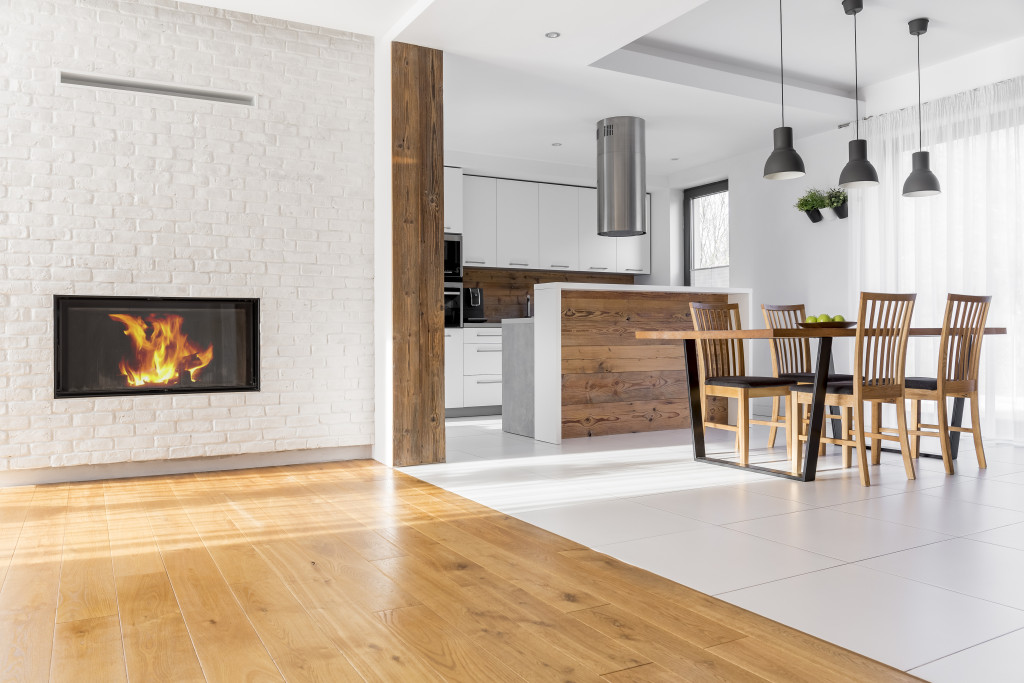- Streamline household tasks and manage time efficiently for a clutter-free and well-arranged home.
- Optimize space with multifunctional furniture and decluttering for a functional and comfortable living environment.
- Enhance energy efficiency by replacing traditional light bulbs and appliances with energy-saving alternatives.
- Enhance comfort with color, texture, lighting, air quality improvement, water quality enhancement, and smart home technologies.
- Practice sustainability with eco-friendly cleaning products, waste reduction strategies, and regular home maintenance.
Achieving comfort and efficiency at home is a common goal in today’s busy world. Many individuals find it challenging to keep up with the demands of daily life, including work, family, and social obligations. Amidst the hustle and bustle of modern life, one area that often gets neglected is the home.
However, maintaining a well-managed living space is crucial in attaining the desired level of comfort and efficiency. A well-managed living space is paramount for creating an environment that promotes relaxation and productivity.
When the home is organized and clutter-free, navigating and finding things when needed becomes more accessible; this, in turn, reduces stress and enhances the overall comfort of the residents. An efficiently arranged home also allows for smooth daily routines and activities, making accomplishing household tasks and responsibilities more manageable.
Balancing household responsibilities is essential to achieve enhanced comfort at home. By distributing tasks among family members, everyone can contribute to maintaining a well-managed living space. This lightens the individual workload and fosters a sense of shared responsibility and cooperation within the household.
By working together, household members can create an environment that is comfortable and conducive to relaxation and enjoyment. This blog post will explore tips and tricks for streamlining household responsibilities, optimizing space, and improving energy efficiency to create a comfortable and efficient living environment.
Streamlining Household Responsibilities for Efficiency

One of the biggest challenges to achieving efficiency at home is managing household responsibilities. From cleaning to cooking to laundry, these tasks can quickly pile up and take over your lives. These are some tips to streamline household responsibilities and make them more manageable:
Time-Saving Strategies
Another critical factor in achieving efficiency at home is time management. Using time-saving strategies, you can make the most of your time and accomplish more with less effort. Some practical, time-saving strategies include creating a to-do list, prioritizing tasks, and using technology to automate tasks such as bill payments and appointment reminders.
Space Optimization
In addition to managing household responsibilities and time, optimizing space is essential to creating a comfortable and efficient living environment. This can be achieved by decluttering, organizing, and using multifunctional furniture. You can free up space and make your homes more functional and comfortable by eliminating unnecessary items.
Energy Efficiency
Finally, energy efficiency is essential in creating a comfortable and sustainable living environment. By making simple changes, such as using energy-efficient light bulbs and appliances, you can save money on your energy bills and reduce your carbon footprint.
Creating a Comfortable Living Environment
In addition to achieving efficiency, creating a comfortable living environment is essential for your overall well-being and quality of life. A cozy and inviting space promotes relaxation and peace of mind and enhances your ability to recharge and rejuvenate after a long day. This can be achieved through the following tips:
Interior Design Tips
Color, texture, and lighting create a comfortable and inviting living space. Also, choosing furniture and decor that reflects your style can help create a space that uniquely feels your own.
Quality of Air Improvement
Poor air quality can lead to respiratory problems and other health issues. To ensure optimal air quality and proper ventilation in your home, seek the assistance of reliable AC repair services. By doing so, you can address any potential issues with your air conditioning system promptly and effectively, ensuring a comfortable and healthy living environment for you and your loved ones.
Water Quality Enhancement
Water quality is another critical factor in creating a comfortable home. Using water filtration systems and reducing water usage can improve water quality and reduce environmental impact.
Smart Home Comfort Technologies
Finally, smart home comfort technologies can help you automate temperature control, lighting, and entertainment systems. Using these technologies can create a more comfortable and efficient living space.
Sustainable Practices for a Comfortable and Efficient Home
Finally, incorporating sustainable practices into your daily lives can help create a comfortable and efficient home while reducing environmental impact. This can be achieved through the following methods:
Eco-Friendly Cleaning Products
By choosing environmentally friendly cleaning products, you can reduce the impact of harmful chemicals on your homes and the environment. This also promotes a healthier living space for your families.
Waste Reduction Strategies
Reducing your waste through composting, recycling, and reducing your consumption can help you create a more sustainable home while reducing your environmental impact. This also helps save money on household expenses.
Regular Maintenance for Long-Term Comfort
Finally, regular home maintenance can help prevent costly repairs and improve comfort and efficiency. Routine upkeep can ensure your homes function at their best, from HVAC systems to appliances.
To achieve efficiency and comfort at home, you must balance responsibilities, optimize space, and embrace sustainable practices. By implementing these tips, you can create a comfortable living environment that reflects your style while reducing environmental impact.

